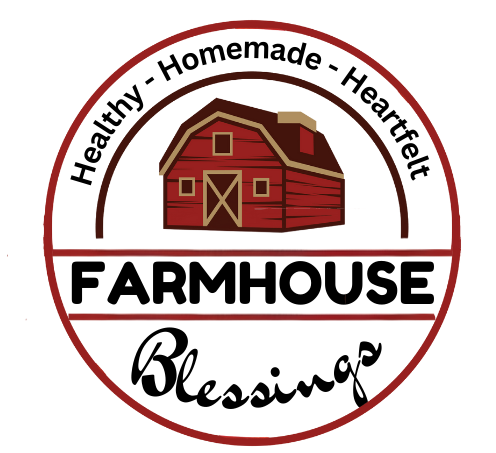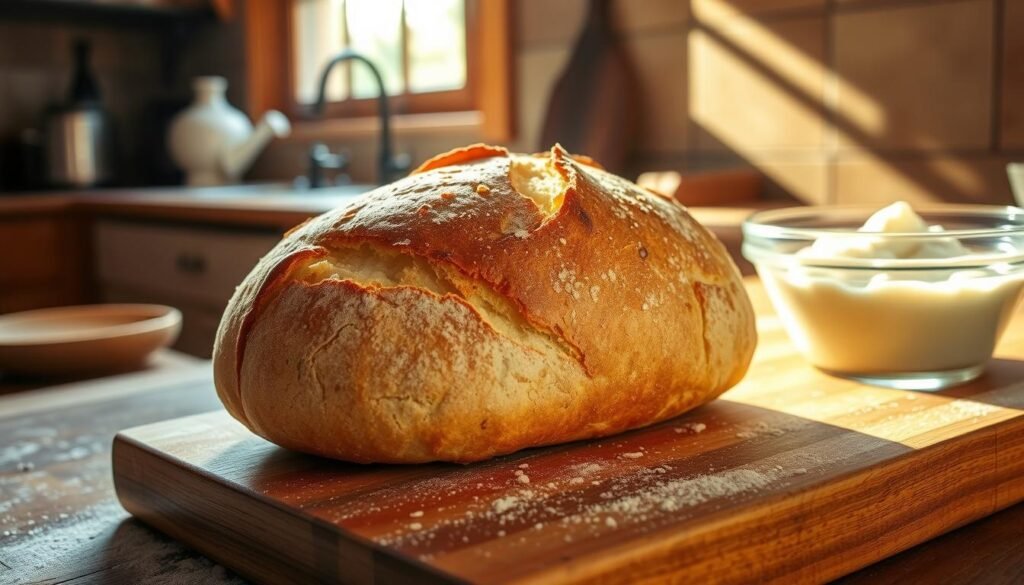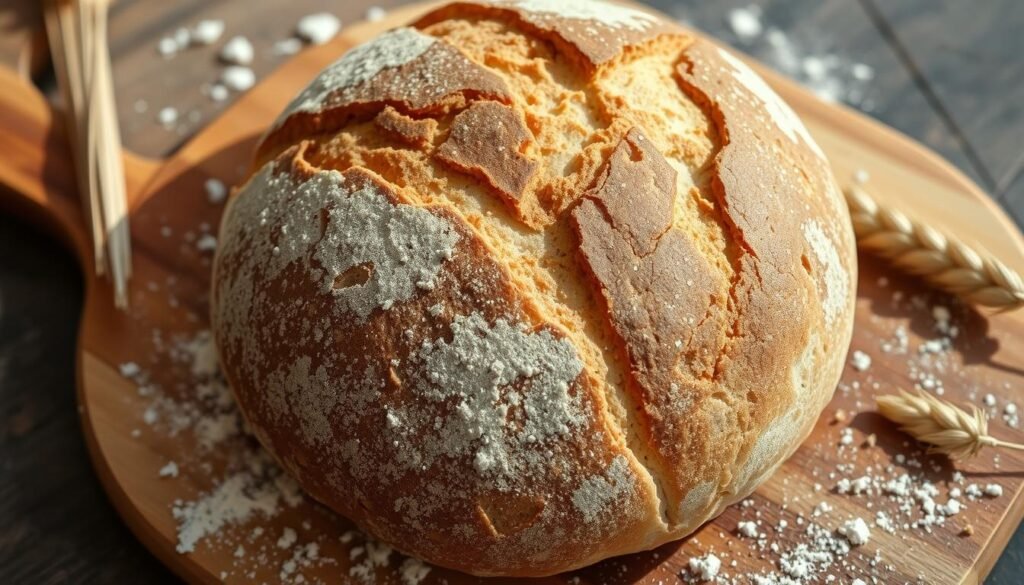Sourdough bread is made without commercial yeast. It uses a live culture called a sourdough starter. This starter acts as a natural leavening agent.
Sourdough has been around since 1,500 BC. It started with ancient Egyptians and spread worldwide. It’s famous for its tangy taste, chewy texture, and crisp crust.
Sourdough is better for digestion and health than store-bought bread. This is because of its natural fermentation and lack of additives.
Key Takeaways
- Sourdough bread uses a live fermented culture called a sourdough starter as the leavening agent, rather than commercial yeast.
- Sourdough has a long history dating back to 1,500 BC and is known for its distinctive tangy flavor, chewy texture, and crisp crust.
- The natural fermentation process of sourdough makes it more digestible and healthier than commercially produced bread.
- Sourdough bread does not contain additives such as milk, oils, or sweeteners, making it a wholesome alternative to supermarket bread.
- Baking sourdough bread at home allows you to control the ingredients and create a truly artisanal loaf.
Understanding Sourdough: A Historical Journey
The story of sourdough bread starts in ancient Egypt. It was used to make baked goods rise. This method, based on wild yeast and bacteria, has traveled the world. It has left a lasting impact on food traditions everywhere.
Ancient Origins and Evolution
Sourdough’s history is both long and interesting. It began in Egypt and spread to Greece, Rome, and France. In France, it became a key part of the cuisine. As people moved to new places, they took their sourdough starters with them. These starters adapted to different environments.
Traditional Bread Making Methods
- The traditional sourdough bread making process uses a starter. This starter is a mix of flour and water that ferments.
- This starter, developed over time, has wild yeast and beneficial bacteria. They work together to make the dough rise and become flavorful.
- Artisan bakers often keep their sourdough starters for years or even decades. They pass them down through generations, seeing them as precious family heirlooms.
Cultural Significance Through Ages
Sourdough has always been important in many cultures. In Alaska, miners kept their starters warm to prevent them from freezing. This ensured their bread could continue. From French baguettes to San Francisco sourdough, this method has been adapted in many ways. It has become a key part of our culinary heritage.
“Sourdough has been a part of human culture for thousands of years, connecting us to our past and our land through the simple act of bread making.”
What Makes Sourdough Different from Regular Bread
Sourdough bread is special because of how it’s made. It doesn’t use commercial yeast like regular bread does. Instead, it uses wild yeast and bacteria from a sourdough starter.
The way sourdough is fermented gives it a sour taste, a chewy texture, and more nutrients. The wild yeast and bacteria in the starter break down the bread flour. This creates flavors that regular yeast can’t match.
Sourdough has many benefits over quick-rise breads:
- It has a lower glycemic index, which is better for blood sugar control.
- It’s easier to digest because the fermentation process breaks down gluten and phytic acid.
- It lasts longer, staying fresh for more than 24 hours.
- It’s great for busy people because it ferments slowly, fitting into tight schedules.
| Characteristic | Sourdough Bread | Regular Bread |
|---|---|---|
| Leavening Agent | Sourdough starter (wild yeast and bacteria) | Commercial yeast |
| Flavor Profile | Complex, sour | Mild, yeasty |
| Texture | Chewy, dense | Light, airy |
| Digestibility | High (breaks down gluten and phytic acid) | Lower (contains undigested gluten and phytic acid) |
| Shelf Life | Longer (stays fresh beyond 24 hours) | Shorter (stales quickly) |
Sourdough bread is loved by health enthusiasts and artisan bakers. It’s made with wild yeast and bacteria. This makes it a tasty and nutritious choice compared to regular bread.
“Sourdough bread is 1000% better for you than conventional bread. The fermentation process improves its nutritional value and makes it easier to digest.”
Essential Ingredients for Sourdough Bread
Making the perfect sourdough bread starts with the right ingredients. At its core are three key things: top-notch bread flour, pure sea salt, and water.
High-Quality Flour Selection
The flour you pick is vital for your sourdough’s texture and taste. Choose bread flour with 12-14% protein. This high protein is key for the bread’s chewy crumb and rise.
Water Temperature and Quality
The water’s temperature and quality matter a lot. Use lukewarm water, about 80-90°F (27-32°C), for best yeast and bacteria activity. Also, use clean, filtered water to prevent fermentation problems.
Salt Types and Usage
A bit of sea salt is crucial for sourdough. It boosts flavor and controls fermentation. Opt for fine-grained, pure sea salt for easy dissolving and a balanced taste.
By picking the best bread flour, using the right water, and adding the right sea salt, you’re set to make amazing sourdough bread.
Sourdough 101: Creating Your Starter
Making your own sourdough starter is key to baking amazing sourdough bread. This starter is a mix of wild yeast and good bacteria. It’s what makes sourdough bread so special.
To start, you need just flour and water. Mix 50 grams of whole wheat flour with 50 grams of water in a clean jar. Then, cover it and let it sit at room temperature for 24 hours.
- By the third day, you’ll see tiny bubbles on the surface. This means your starter is alive.
- By the fifth day, your starter should have risen and fallen. This shows it’s ready for regular care.
- After 8 days, your starter can pass the “float test.” This means it’s ready for baking.
To store your starter, feed it equal parts flour and water before refrigerating. If you bake often, keep it at room temperature and feed it daily. Missing a feeding? Just give it two feedings in 24 hours before using it.
“The key to a successful sourdough starter is patience and consistent feeding. With a little time and care, you’ll have a thriving culture that will elevate your baking to new heights.”
Whether you make your own starter, buy a dried one, or get one from a friend, the fermentation process and wild yeast make sourdough special. With practice, you’ll master sourdough baking.
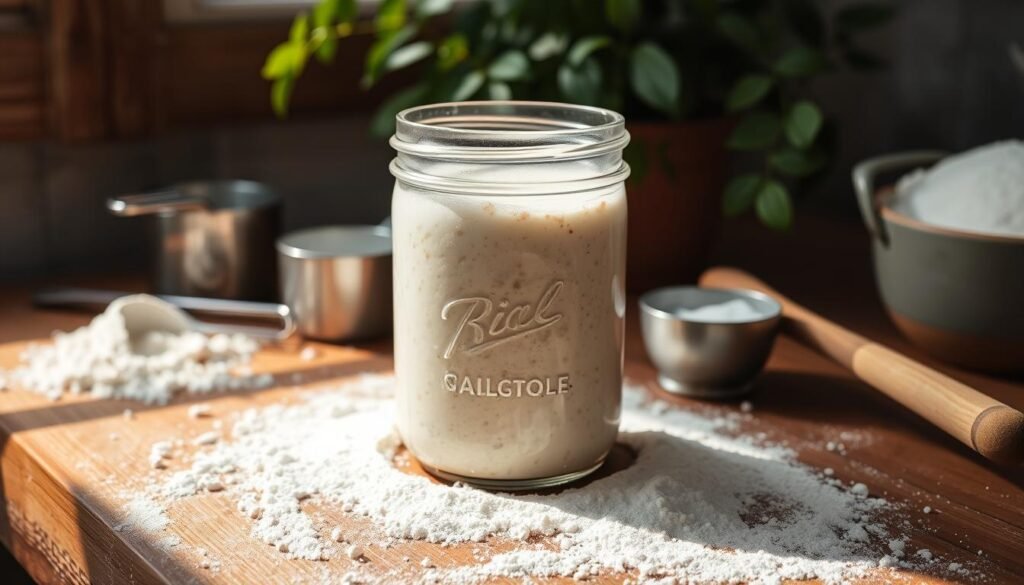
Maintaining and Feeding Your Sourdough Starter
Keeping your sourdough starter healthy is key to baking great bread. A regular feeding schedule and proper storage are crucial. Follow these simple steps to keep your starter strong and ready for baking.
Daily Feeding Schedule
Feed your sourdough starter at least twice a day. Use a ratio of 1 part starter to 5 parts flour and water. This balance ensures a strong, flavorful starter. The starter should be like thick pancake batter after feeding.
If you bake often, keep your starter at room temperature and feed it every 12-24 hours. For less baking, store it in the fridge and feed it weekly.
Storage Methods
Store your sourdough starter in the fridge for up to two months without feeding. Before baking, revive it by feeding it equal parts flour and water. Let it sit at room temperature for 12-24 hours, repeating this 2-3 times until it’s active and bubbly.
You can also dry your starter for long-term storage. Spread it on a parchment-lined baking sheet and let it dry completely. Store the dried flakes in an airtight container. Rehydrate and feed it as usual when you’re ready to use it.
Troubleshooting Common Issues
- Sluggish Starter Activity: If your starter is slow or lacks bubbles, try feeding it more often or adjust the flour-to-water ratio.
- Dark Liquid Layer: The dark liquid, or “hooch,” is normal. Just stir it back into the starter before feeding.
- Unpleasant Odors: Off smells mean your starter might be out of balance. Clean the container, adjust feeding, and try a different flour.
By sticking to a regular feeding routine and watching your starter’s behavior, you’ll have a thriving starter. With practice and patience, you’ll soon be baking like a pro!
Essential Tools and Equipment for Sourdough Baking
To improve your sourdough bread baking, you need more than just good ingredients. The right tools and equipment are crucial for success. Let’s look at the key items every serious sourdough baker should have.
Accuracy is key in sourdough recipes, which use weight in grams. A digital food scale is a must-have. It lets you measure flour, water, and more with precision for consistent results.
A Dutch oven is also essential. It mimics professional oven steam, helping bake perfect sourdough loaves. You can find Dutch ovens in cast-iron or enameled cast-iron, in various colors and features.
- A baking steel or baking stone can also be a game-changer, providing a sturdy, heat-retaining surface for your dough to bake on.
- Proofing baskets, also known as bannetons, are essential for giving your sourdough its distinctive shape and allowing the dough to maintain its structure during the final proof.
- Other useful tools include a bench scraper for handling and shaping dough, a bread lame or sharp razor blade for scoring the surface, and a serrated bread knife for slicing your freshly baked loaf.
While not all these tools are necessary, they can greatly improve your sourdough baking. They help you achieve professional-grade results right in your kitchen.
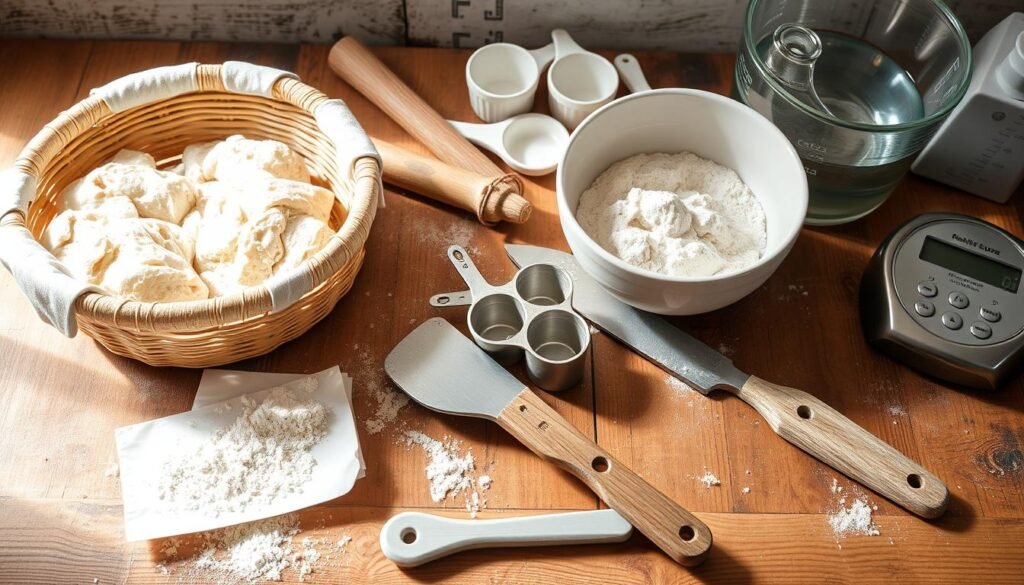
“The right tools can make all the difference in the world when it comes to baking artisan bread. Investing in quality equipment is an investment in your craft.”
The Art of Fermentation and Dough Development
Sourdough baking is a true artform. The fermentation process is key to its iconic flavor and texture. The bulk fermentation stage is crucial for the dough to rise and develop its unique character.
Understanding Bulk Fermentation
Bulk fermentation lets the dough rise and ferment. It takes 3 to 12 hours, depending on temperature and starter strength. During this time, yeast and bacteria break down sugars and starches. They produce carbon dioxide, which leavens the bread.
Signs of Proper Fermentation
- The dough almost doubles in size, showing a healthy bread leavening process.
- The dough looks airy and relaxed, not dense and tight.
- Gently pressing the dough leaves an indent that slowly fills back in, showing proper gluten development.
Stretch and fold techniques during bulk fermentation improve the dough’s structure. This results in a beautifully sourdough recipes with an open, light crumb.
“The fermentation process is where the magic happens in sourdough baking. It’s a delicate dance between time, temperature, and the microbial life in the starter that ultimately determines the flavor and texture of the final loaf.”
Shaping and Scoring Techniques
Learning to shape and score dough is key for making top-notch artisan bread. Techniques like folding the dough help build its structure. The boule and bâtard shapes are favorites for their beauty and taste.
Scoring the dough before baking is also important. It lets the bread expand nicely and look great. Use a sharp bread lame for shallow cuts at a 45-degree angle. This helps create the “ear” on sourdough recipes.
Good shaping and scoring improve the bread’s texture and look. With practice, bakers can make stunning loaves. These loaves will impress everyone who sees them.
